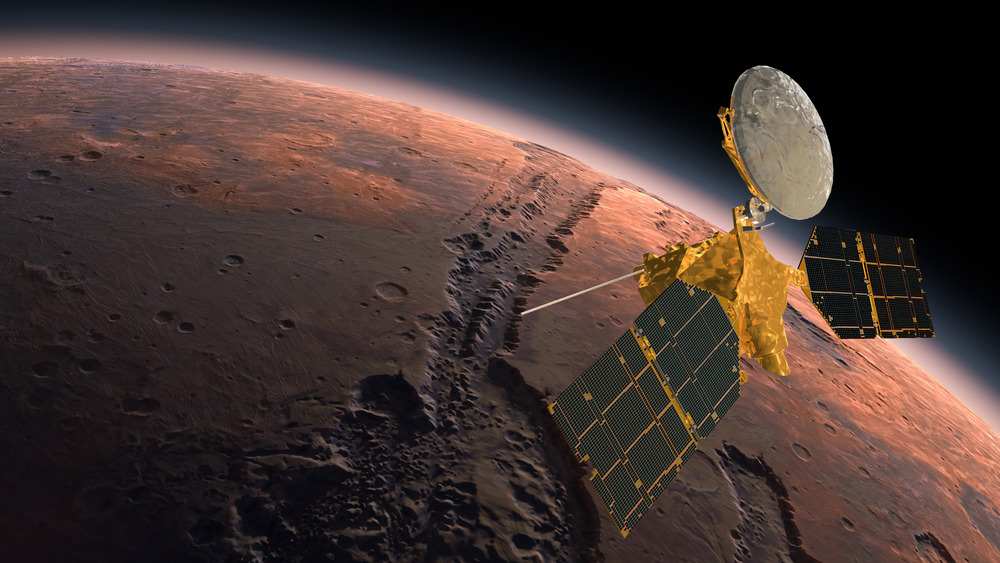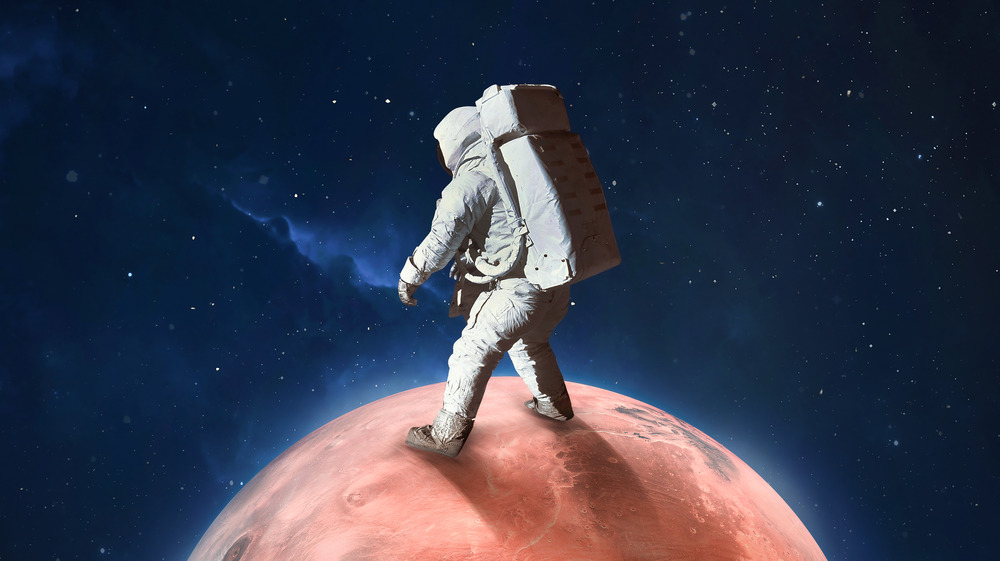How Long Would It Really Take To Get To Mars?
The idea of human beings living on Mars still seems like something straight out of science fiction, but according to Florida Today, astronauts and other experts in the astronomy field fully expected human Mars colonies to exist by now. In 2019, astronaut Mae Jemison, who made history in 1992 by becoming the first Black woman to travel into space, told students at the Kennedy Space Center Visitor Complex, "I just assumed by the time I got to be old enough to go into the space program ... we'd be living on Mars or I'd be working on Mars just as a scientist."
According to NASA administrator Jim Bridenstein, the technology that enables people to travel to Mars exists, but the funds to make it happen do not. United States presidents from George H.W. Bush to Donald Trump have declared a trip to Mars a priority within the American space program, but not enough funding has come in over the last 30 years. Per NASA, the agency is currently working on a project intended to put human beings back on the moon by 2024 and then plans to "establish sustainable missions" by 2028. Of course, as noted by Bridenstein, "we just need bipartisan support and the resources to get this done."
If Federal funding came through, or if professional space fan Elon Musk follows through on his company Space X's plan to get to Mars, as detailed on SpaceX's website, just how long would it take to get there?
Mars is really, really far away
Per Space, the distance between Earth and Mars is constantly changing due to the fact that they are both always orbiting around the sun. Theoretically, the closest they could possibly be would be when Mars is close as possible to the sun while Earth is as far as possible to the sun, which would put them approximately 33.9 million miles apart. This has never actually happened. The shortest distance ever recorded between Mars and Earth was 34.8 million miles in 2003. The average distance between the two planets is 140 million miles.
According to the BBC, it's only every two years that the planets are in the perfect position to travel from Earth to Mars using the least possible amount of rocket fuel. One of those ideal years was 2020, hence the recent flurry of spacecraft launched for Mars from the United States, the United Arab Emirates, and China. The journey takes about seven months of space travel, provided there are no difficulties that hold things up. Then there's the "seven minutes of terror" that come with landing on Mars. Spacecraft must enter Mars's atmosphere, which is 100 times thinner than the Earth's, at precisely the correct angle, otherwise they'll either burn up or bounce off. The surface of Mars is incredibly uneven and rocky, which presents another challenge to accomplishing a safe landing. All told, the long trip to Mars is just one of many challenges involved in the quest to explore the red planet in person.

